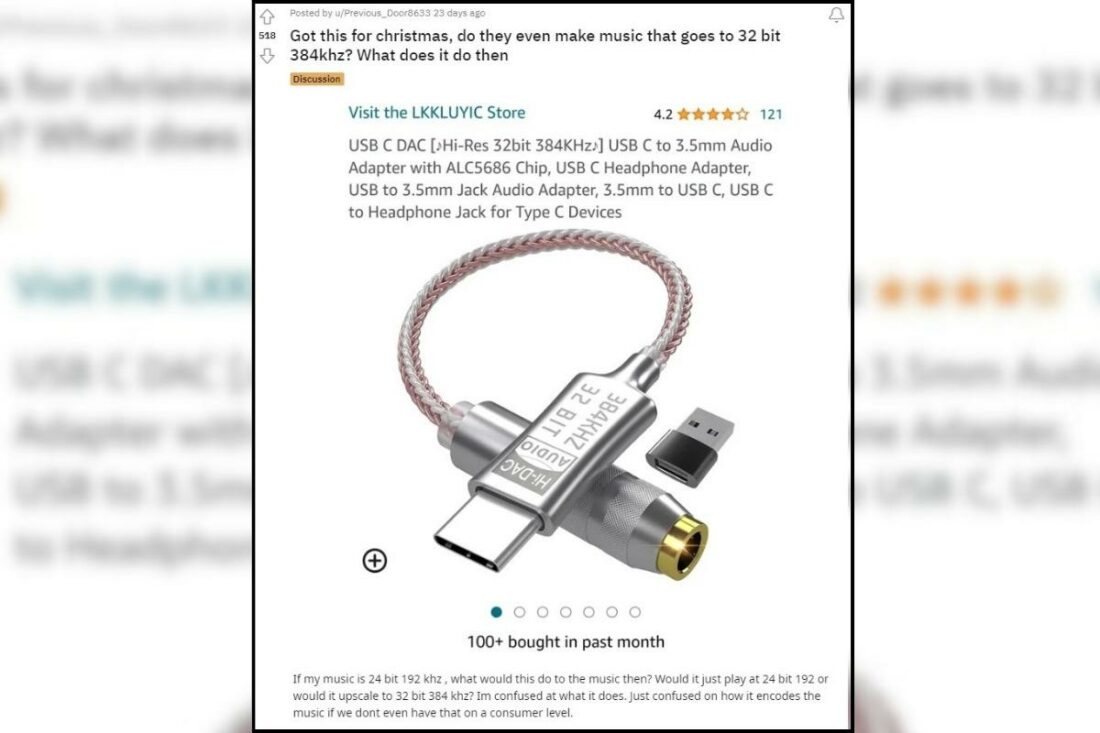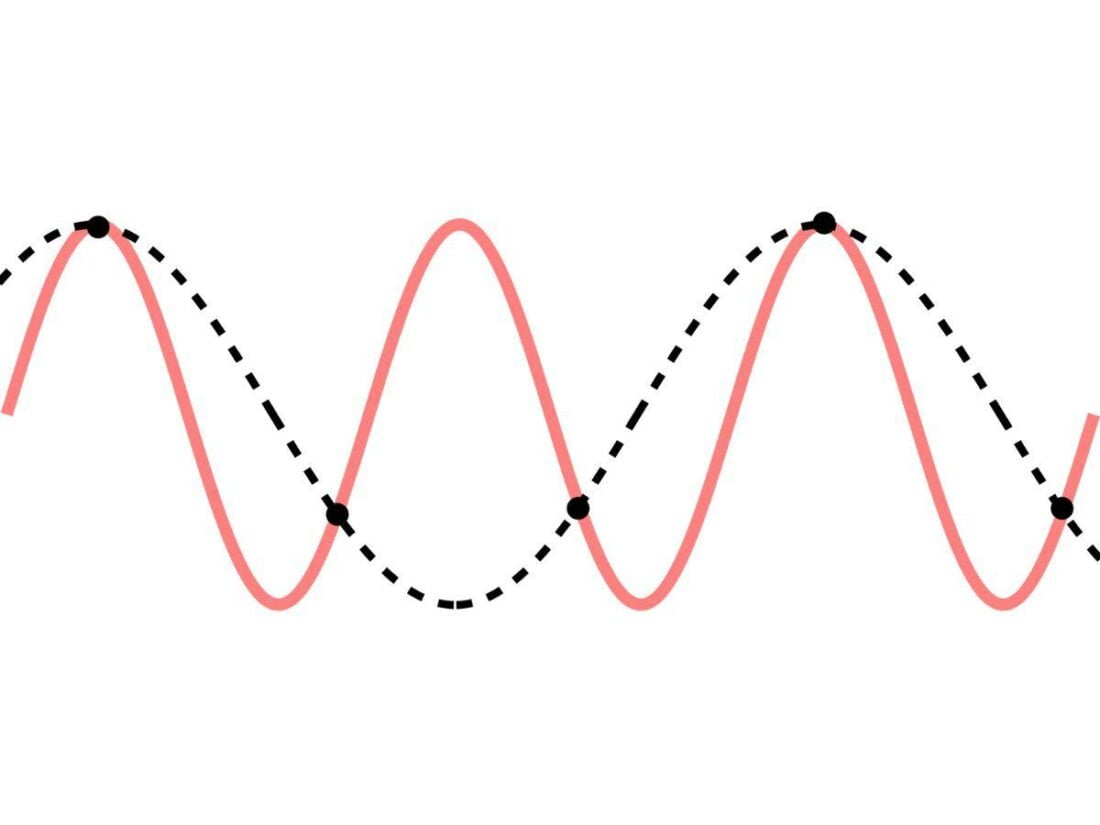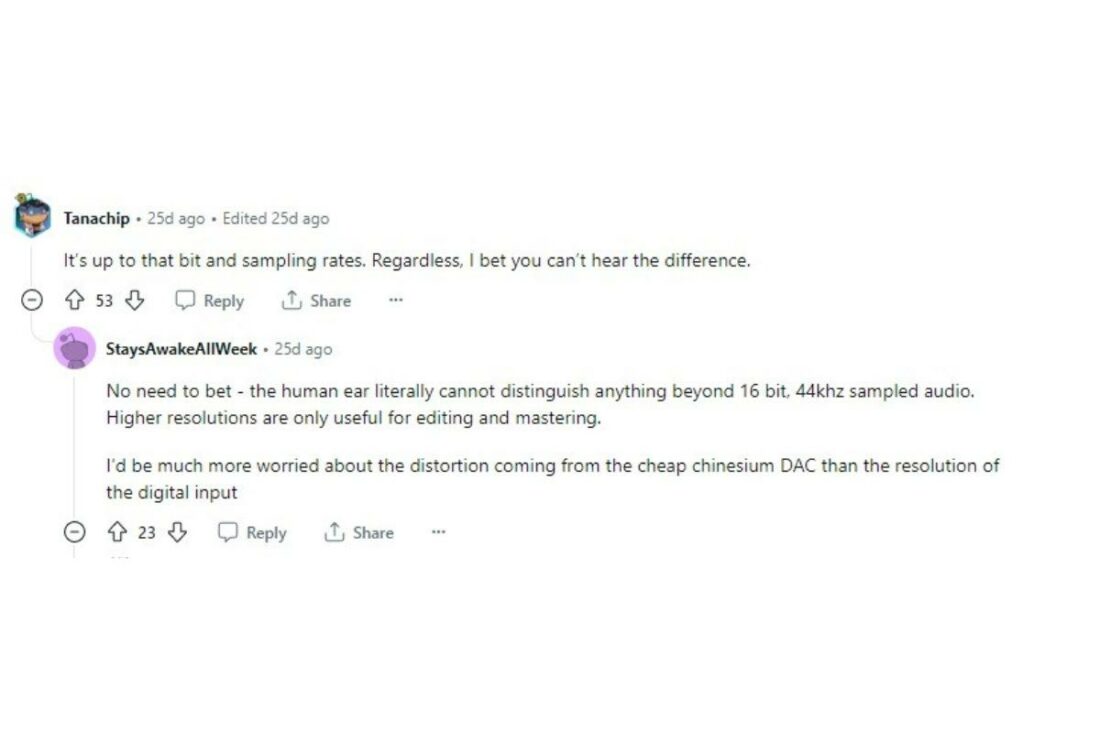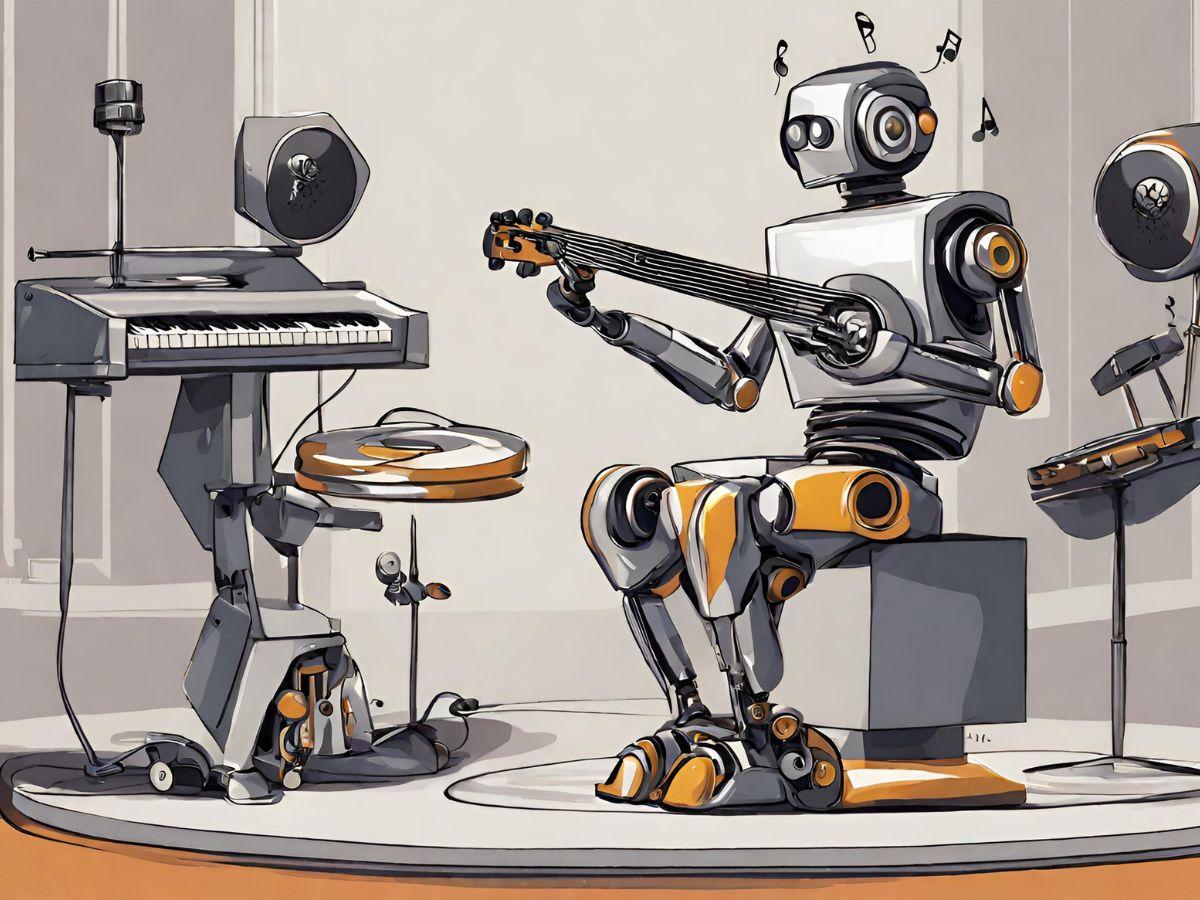And why it’s still okay to use them.
Recently a Redditor by the name Previous_Door8633 posed a riveting question on why a DAC that goes up to 32-bit/384 kHZ is even a thing.

To give a quick background, a 32-bit resolution means it can represent audio data with very high precision, while a 384 kHz sampling rate means it can process samples of audio data 384,000 times per second. Yet, most high-resolution audio formats max out at 24-bit/192 kHz.
So the questions are valid. What’s the point of 32-bit/384 kHz DACs? And is there actually music in that format?
As an audiophile with a Philosophy degree, I’ll answer this question by simplifying multiple concepts, starting with how information, compression, conversion, bits, hertz, and all that work. Let’s get right into it!
The Problem of Data
To start, we can look at the philosophical point about how humans store and process information:
The main problem in information science is that reality, as it’s presented to us, is infinitely complex. In contrast, our means of storing and processing information are limited. This means we need to do a lossy compression of reality and, for storage, capture only what is relevant to us.
I know, it might feel disappointing to think that our knowledge is like a compressed MP3 or JPEG file. But it’s not all doom and gloom.
Interestingly, it’s possible to record information in such a way that it closely resembles the real thing when we interpret it.

The idea is that most physical events can be represented by their frequency and intensity. The Nyquist-Shannon sampling theorem states that we can accurately capture these complex phenomena in digital form if we record them at twice their frequency. This concept became foundational in digital signal processing.
This is why, while humans generally can’t hear frequencies above 20 kHz, the standard sampling rate for audio is set at 44.1 kHz, which is more than double the highest frequency we can hear.
Rich in Data
Of course, much of the sounds of today’s music have no real-life origin as they’ve been conjured up in fully digital production processes. But let’s for a minute imagine that there’s a real physical musical event that needs capturing. Mic the place up, route everything to preamps, and then to analog-to-digital converters.
Audio capture is no less complex and messy than playback.
Mic placement and choice are critical for the engineer to be able to faithfully reconstruct the cow from a burger patty that comes in through the wires. Just like DACs, the ADCs work at a set bit depth and sample rate. Usually, they’re set as high as possible with storage and processing capabilities kept in mind.
During mixing, the higher data rates help because digital signal processing of all kinds usually works better when there’s more material to work with – even if it doesn’t contain relevant data for the listeners.
After everything is mastered and done, the resolution of the music files depends on the publisher’s requirements.
Most streaming services are content with around CD quality at 16-bit/44.1 kHz, while others take up to 24-bit/192kHz if hi-res playback is needed. Sure, there are boutique outlets that could sell you 32-bit/384 kHz recordings, but they are extremely rare.
A Lot to Unpack
Returning to the original question posed, what’s the point of a 384kHz sample rate in music? Do we actually benefit from retaining analog data up to 192kHz? Does your DAC care what you feed it in? Will it play nicer with richer data streams?
Well, it depends. Nowadays, most DACs will upsample even pedestrian 16-bit/44.1 kHz audio to something much more grand. Even if no extra info is added, the inflated datastream is easier to process without errors.
It’s been rumored that ESS DACs use over 50-bit pipelines to ensure that their volume control can be used without incurring quantization errors.
For example, around 10 years ago, it made more sense to listen to hi-res tracks above CD resolution. The reason for this is low-pass filtering.
Most DACs employ a digital low-pass filter so that only useful signals get sent to the amp.
Ideally, these filters should only allow frequencies below half the sampling frequency and attenuate everything above. However, real-life filters come with drawbacks, as they can be either frequency-domain or time-domain optimized. So, they work better if the filters are set above the human hearing range.
Fortunately, modern DACs have improved over time and can handle standard audio files better. They have more processing power, and their low-pass filters perform well enough even with garden variety 16-bit/44.1 kHz files.
So, Why Are the Insane 32-bit/384 kHz Specs a Thing?
One reason is plain old specsmanship. If, say the ESS comes out with a chip that can do it, then AKM needs to match or exceed to remain competitive.
The second reason is simply because they can.
With modern manufacturing processes, a 32-bit delta-sigma DAC isn’t hard to make. That’s why even a humble dongle can show these impressive specs. Of course, it remains to be heard whether the actual sound performance impresses as well.
High on Rez
Okay, so you prefer listening to 24-bit/192 kHz recordings, should you feel bad? Of course not!
There are scenarios where hi-res really makes an audible difference. Upsampling and downsampling can be less than transparent and filtering can be fallible on some DACs. But, the thing is that these effects are in the audible range, rather than over 20kHz.
As for 32-bit/384 kHz music, there’s a rub that’s rarely discussed.
There aren’t many microphones that can reliably pick up ultrasonics and the micing techniques aren’t taking into account ultrasonic content. If something ends up being recorded, it’s not really intentional.
Then, there’s also the fact that studio monitors aren’t made to monitor that high, so the engineer can’t really make conscious mixing decisions. If they can hear that high, that is.
Lastly, end-user the playback equipment, be it speakers or headphones, usually isn’t equipped to deal with content that high up in the sound spectrum.
In some cases, ultrasonics can even modulate sound in the audible range and make things worse.

As any experienced gearhead will tell you, the sound of a DAC isn’t about the resolution it supports or any electrical part in particular. The resulting sound signature (or a lack thereof) is the result of many variables.
